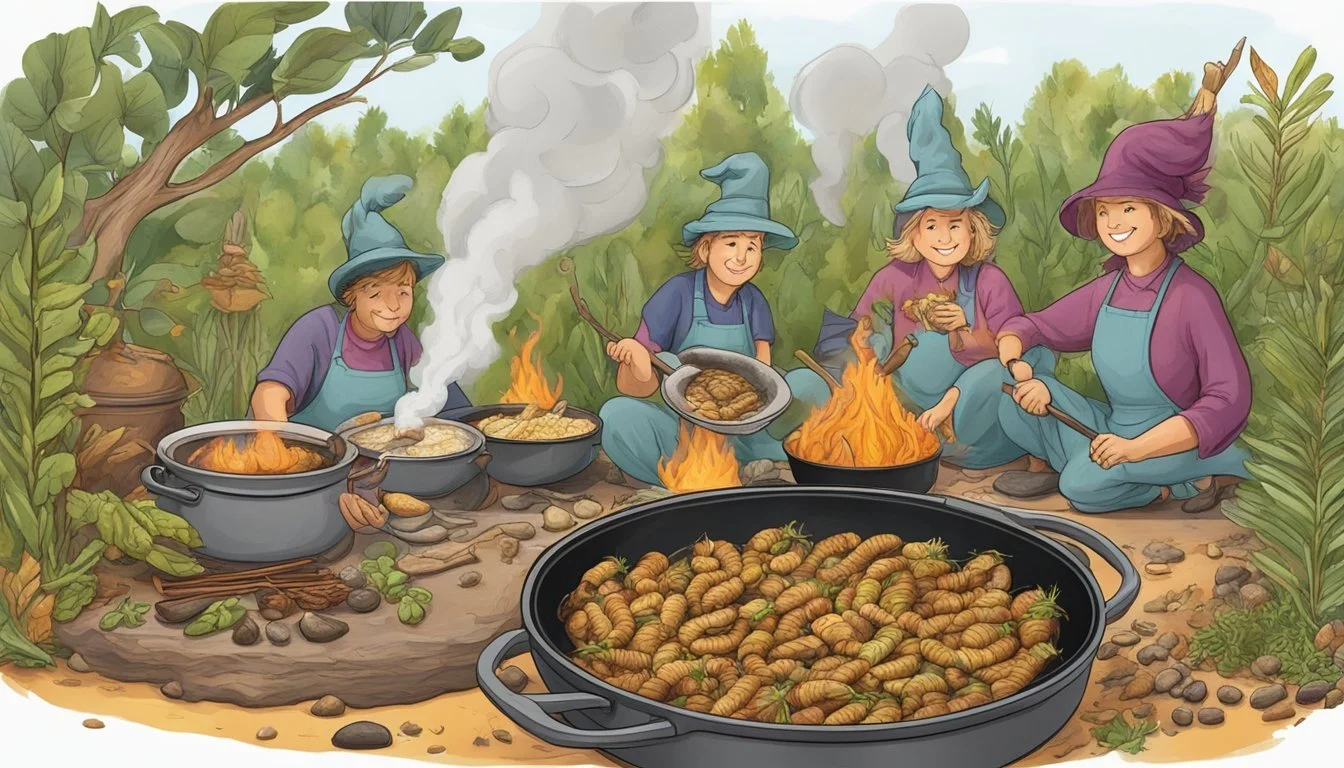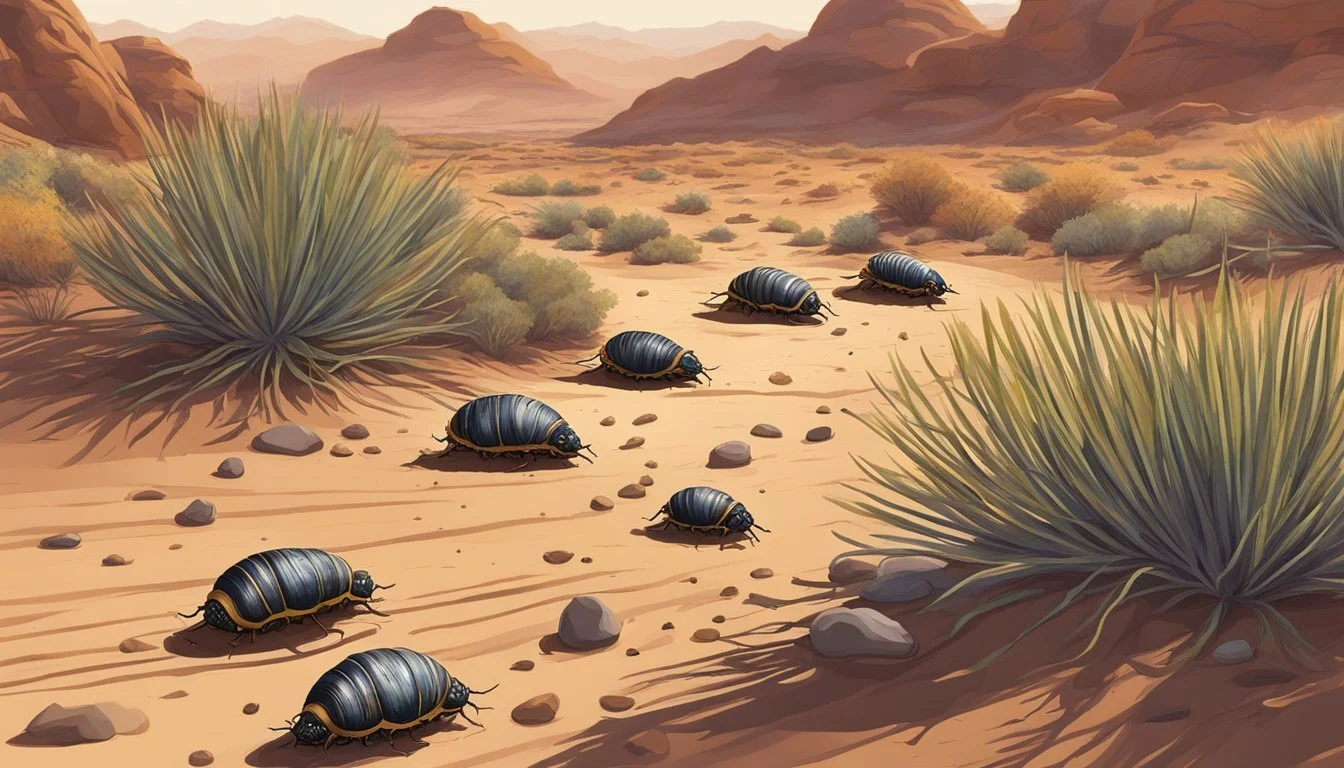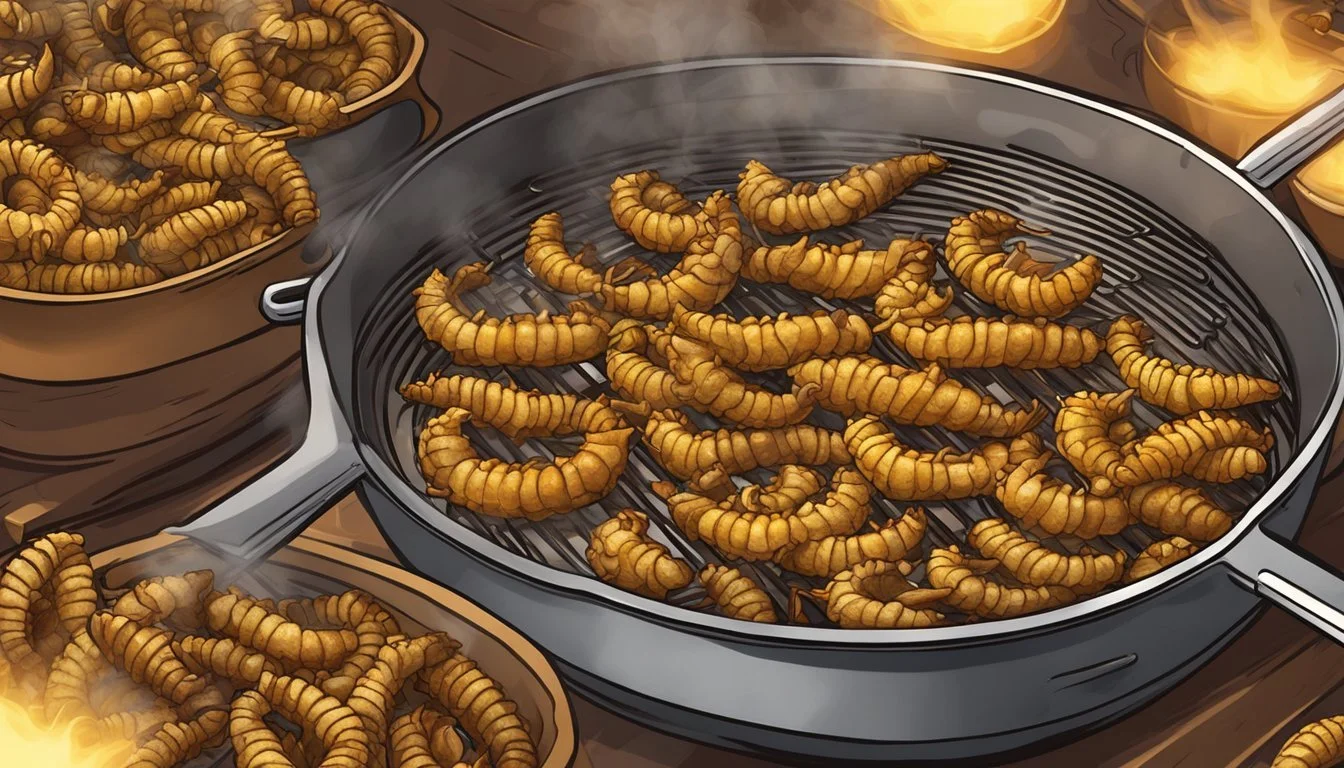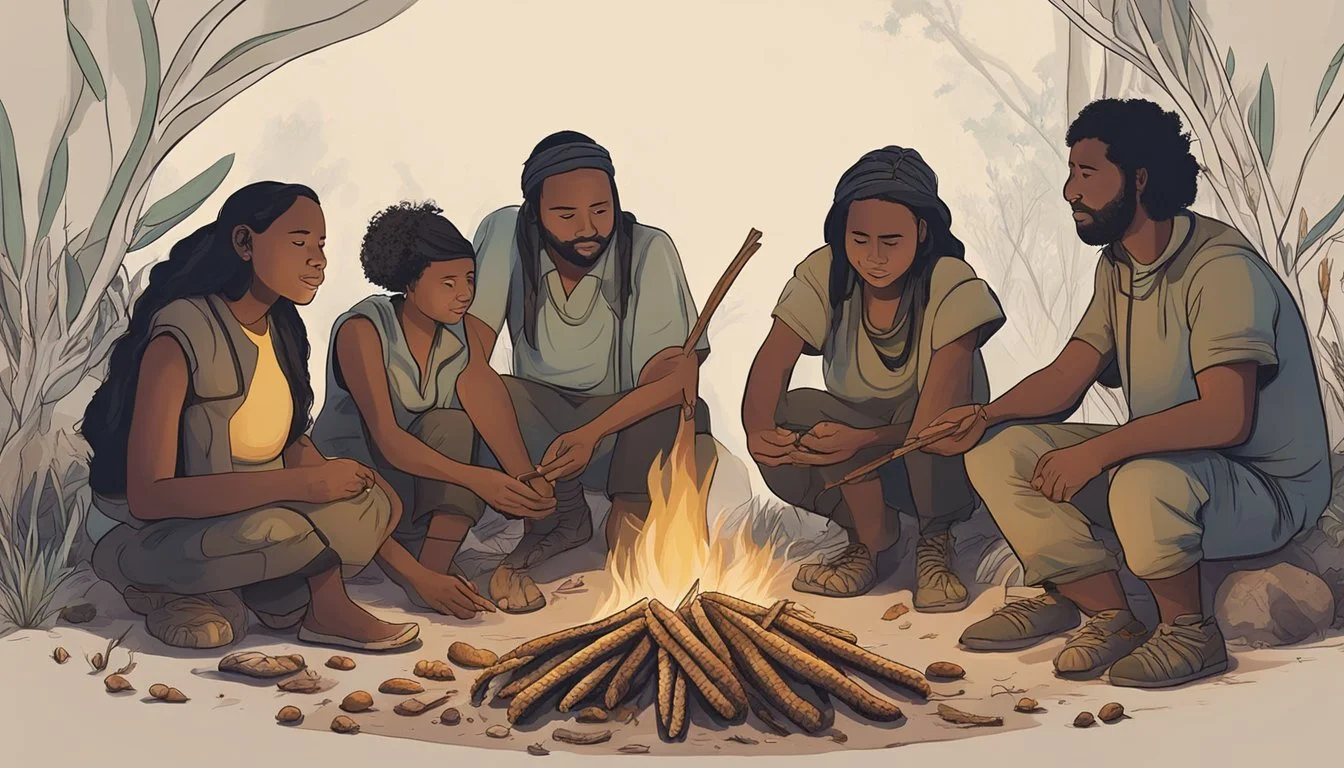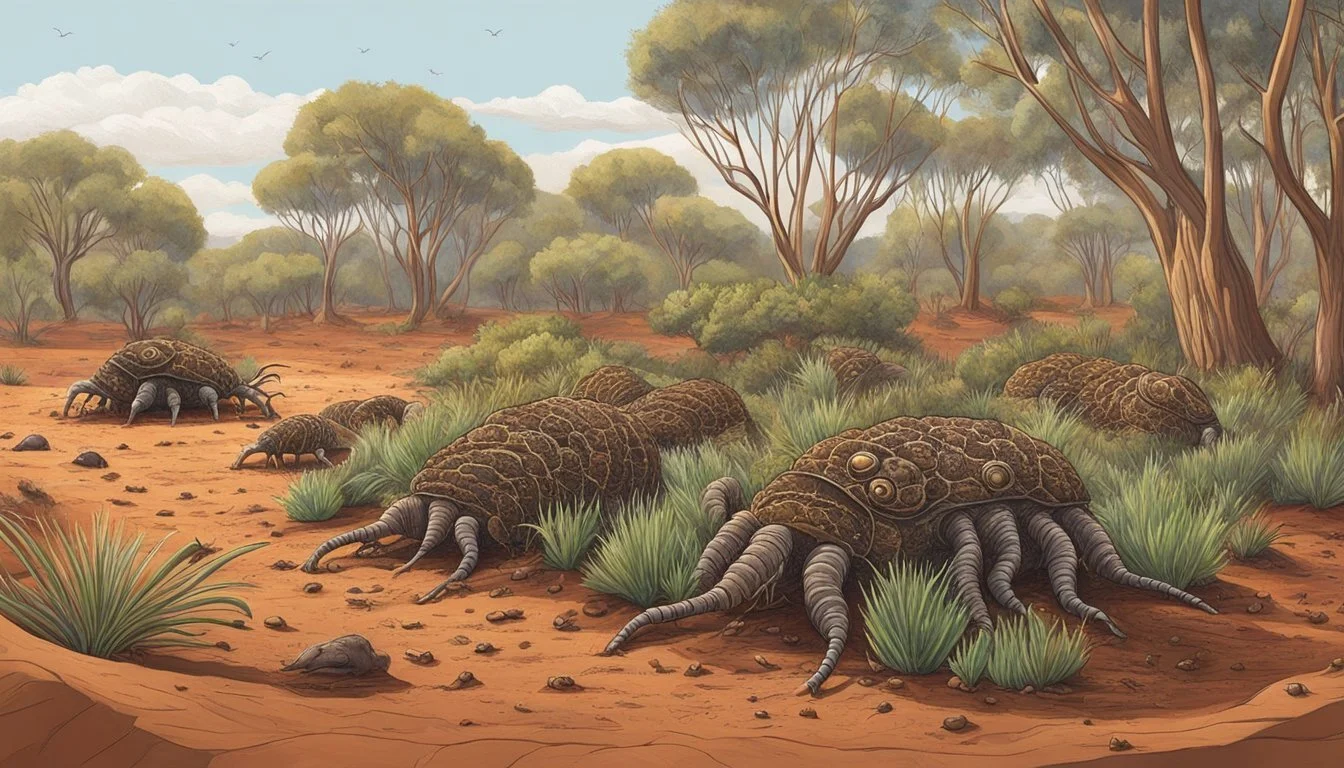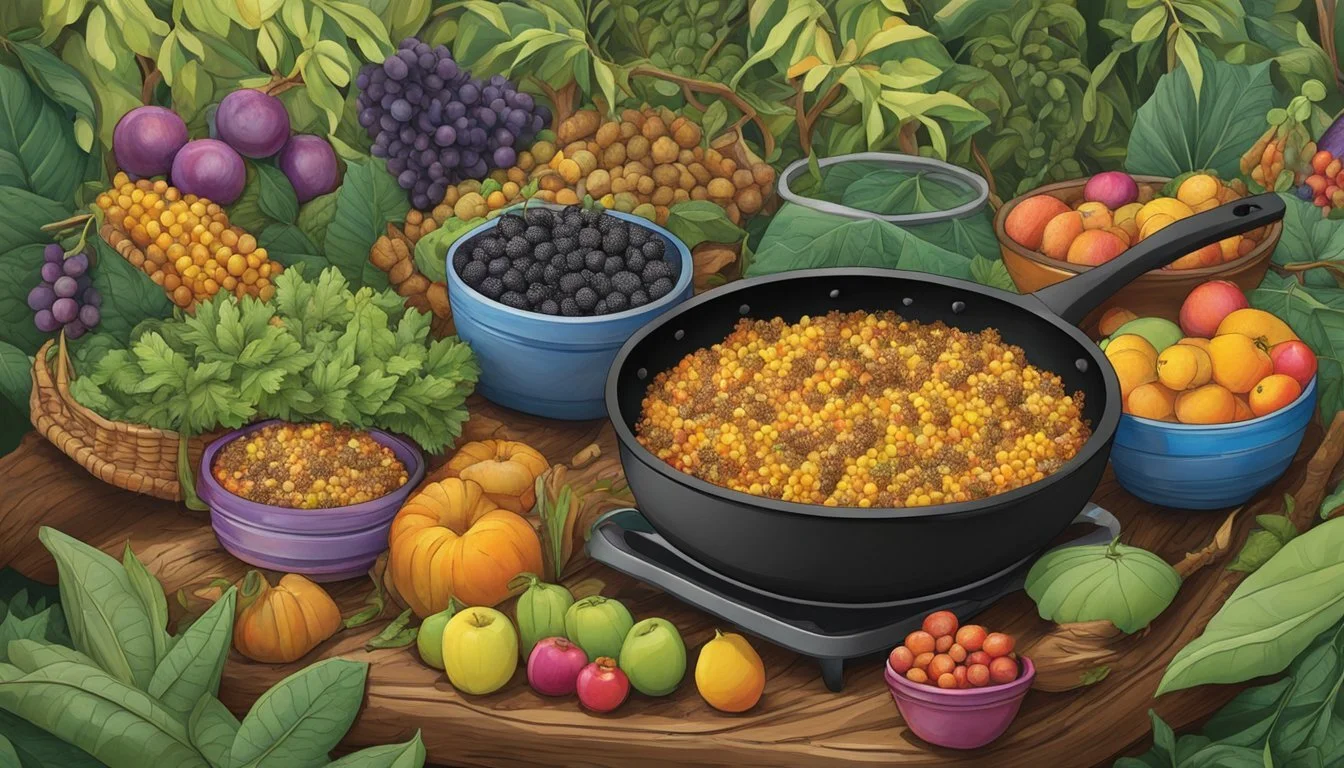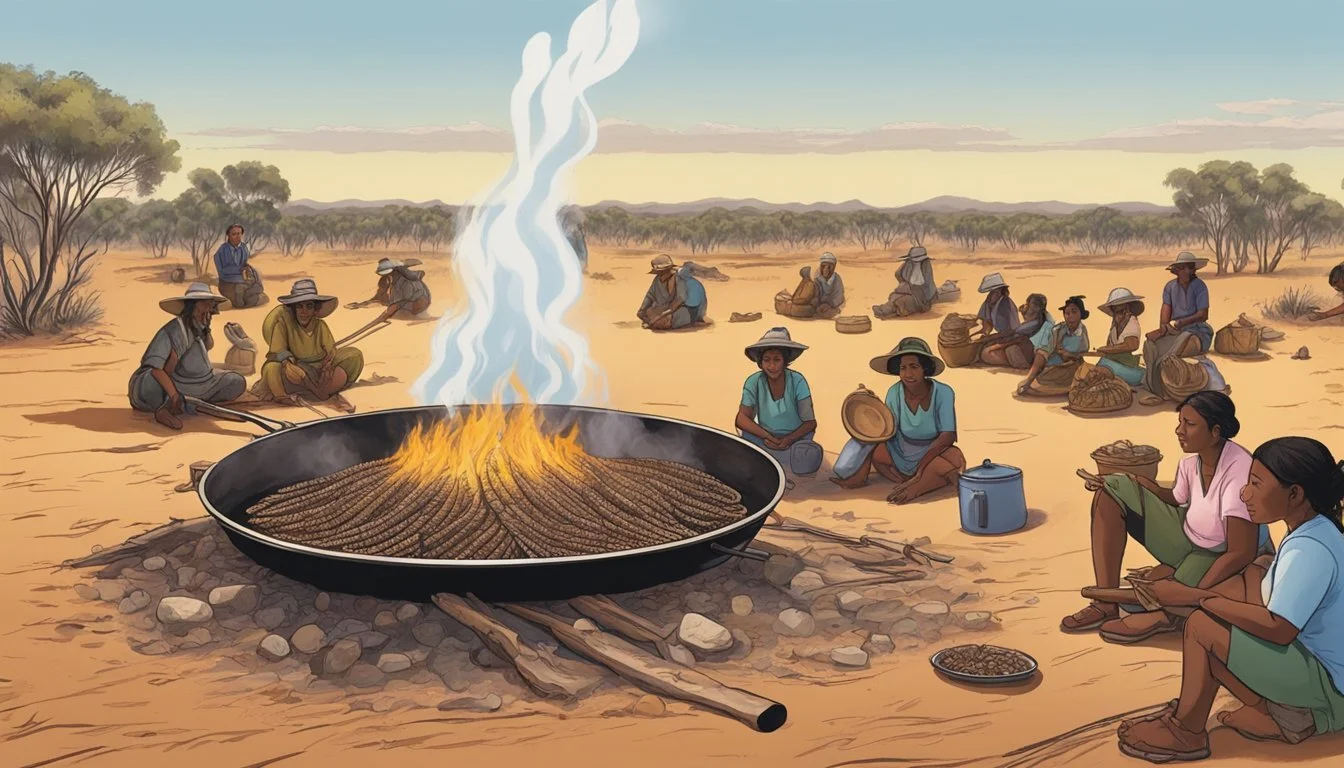Fried Witchetty Grubs
A Taste of Traditional Aboriginal Cuisine
Witchetty grubs hold a significant place in Aboriginal Australian culture as a traditional food source. These grubs are the larvae of the cossid wood moth Endoxyla leucomochla and are often associated with the Witchetty bush, Acacia kempeana, from which they get their name. Aboriginal Australians, particularly those in central Australia, have been consuming these protein-rich grubs for thousands of years. The larvae feed on the sap of the Acacia roots, which contributes to their nutritional value.
Preparing and consuming witchetty grubs is an experience deeply rooted in the Aboriginal way of life. These grubs can be eaten raw but are more commonly lightly cooked to enhance their flavor, often described as resembling almonds. Cooking not only makes them more palatable but also softens their texture. Aboriginal Australians have mastered the art of finding these creatures, traditionally women and children would dig around the roots of the witchetty bush to unearthing these nutritious larvae.
In the context of Aboriginal Australian bush food, or 'bush tucker,' the witchetty grub is just one part of a much broader and deeply interconnected food system. These traditional foods, which also include a variety of plants, meats, and nuts, aren't just sources of sustenance but are integral to the cultural practices, stories, and survival knowledge passed down through generations. The practice of foraging and preparing witchetty grubs is a living illustration of Aboriginal Australians' deep understanding and respect for the land.
Origins and Cultural Significance
Witchetty grubs have a profound place in the cultural and dietary practices of Indigenous Australians. Known as 'witjuri' to the Adnyamathanha people of South Australia's Central Desert, these grubs are considered a traditional food source, rich in protein and fat.
Aboriginal women and children are often the ones who gather witchetty grubs by digging around the roots of the witchetty bush, Acacia kempeana. They hold not just nutritional value but also cultural significance, as many aboriginal communities consider them a delicacy.
Cultural Role
The grub plays a role in Aboriginal Dreamings and mythology.
Consumed for thousands of years, a part of bush tucker.
Seen as a gift from the land, reflecting the deep connection to traditional lands.
In Aboriginal society, bush foods like witchetty grubs are more than sustenance; they act as a conduit for passing down knowledge and survival skills through generations. The practice of hunting and gathering such foods is integral to maintaining the link with their heritage and environment.
The process of finding and preparing witchetty grubs, therefore, isn't merely a means of obtaining food but is an educational and communal activity that reinforces social bonds and Indigenous Australians' deep connection to their land.
Biological Perspective
The biological significance of witchetty grubs lies in their unique life cycle, their ecological role, and their intimate connection with the witchetty bush.
The Witchetty Bush and Its Grub
The witchetty bush, known scientifically as Acacia kempeana, is a central figure in the life of the witchetty grub. The grub, which is the larval form of the cossid wood moth (Endoxyla leucomochla), relies on this specific bush for nutrition. The larvae burrow into the woody roots of the bush and feed on its sap, which contributes to their growth and development.
Life Cycle of the Cossid Wood Moth
The cossid wood moth undergoes a complete metamorphosis:
Egg: The life cycle begins when a female moth lays eggs on the bark of the host plant.
Larva (Witchetty Grub): Upon hatching, the larvae bore into the branches or roots of the bush, where they remain for months or even years.
Pupa: Once fully grown, the larvae form a cocoon within the wood.
Adult Moth: Eventually, they emerge as adult moths to repeat the cycle.
During their larval stage, witchetty grubs serve as an important source of nutrition for some Indigenous Australian communities.
Witchetty Grubs as an Ecosystem Component
Witchetty grubs play a key role in their ecosystems beyond their cultural significance. As wood-boring grubs, they help in the natural process of breaking down plant matter, which recycles nutrients back into the soil. This nutrient cycling is essential for the health of arid environments where the witchetty bush thrives. They also act as a food source for various predators, maintaining the balance of the food web.
Nutritional Value
Witchetty grubs, a traditional food source of Australian Aborigines, are considered a nutritionally rich entree. These larvae of moths are particularly high in protein, which is essential for muscle repair and growth. Their protein content is often compared to that of red meat, making them a valuable component of the indigenous diet.
Protein: A single witchetty grub provides a substantial amount of protein, essential for body repair and maintenance.
Fat: They contain healthy fats, beneficial for energy production and cell health.
Vitamins: Witchetty grubs are a source of essential vitamins, including Vitamin B1, B2, and B3.
Minerals: They offer minerals such as calcium, iron, and zinc, which are vital for bone health, oxygen transport, and immune function.
These nutritional attributes position witchetty grubs not only as a survival food but also as a functional food option with potential health benefits. The larvae's versatility as a food source is evident in the various ways they can be prepared, from raw to lightly fried, which can alter their nutritional profile.
Given their nutritional content, witchetty grubs could be considered a pragmatic alternative to conventional meat sources. Their consumption reflects a harmonious relationship between the environment and Aboriginal culture, showcasing a profound understanding of local ecology and sustainable food practices.
Harvesting Practices
In the practice of harvesting witchetty grubs, Indigenous Australians, specifically Aboriginal women and children, show specialization and tradition. They possess extensive knowledge of the habitat and lifecycle of the witchetty grub, a nutritious and important food source. These grubs are typically found within the root systems of the witchetty bush (Acacia kempeana), where they are sought out and carefully extracted.
Key Steps in Harvesting:
Locating the Bush: Women and children search for the acacia bush, identifying telltale signs of grub activity.
Unearthing the Grub: Gently digging around the bush's roots, they uncover the grubs without damaging the surrounding environment.
Harvesting Tools:
Traditional digging sticks (pointed on one end) are the primary tools used for grub extraction.
Protection Measures:
Safety: Handlers avoid potential injuries by gently handling the grubs and wood.
Fire-Use: They sometimes use hot ashes to coax the grubs out to prevent burns or wounds.
After harvesting, witchetty grubs may be consumed raw or lightly cooked. To cook, they are placed on hot ashes, allowing the heat to transform their texture and flavor. This method minimizes the risk of injury to the cooks, ably preventing burns as they skillfully manage the process.
The harvest of witchetty grubs is a clear example of Aboriginal Australians’ sustainable use and respect for their natural resources, reflecting a practice honed over millennia, conferring both nutrition and culture to the people.
Culinary Uses
Witchetty grubs have long stood as a nutritious food source, celebrated for their versatility in both traditional and modern cooking applications. High in protein and possessing a flavor often likened to scrambled eggs or almonds when cooked, these grubs are a cornerstone of bush tucker cuisine.
Traditional Preparation Methods
Traditionally, Aboriginal Australians would consume witchetty grubs either raw or cooked. Raw witchetty grubs are said to have a taste reminiscent of almonds. When it comes to cooking, the grubs are generally roasted over coals to achieve a crispy exterior. The roasting process helps in enhancing their inherent nutty flavor. Customarily, the grubs are skewered and placed directly on the coals until the outer skin becomes crunchy and golden brown. Traditional roasting is akin to how one might barbecue prawns, relying on the natural flavors without the need for additional seasonings.
Modern Cooking Applications
Advancing into contemporary cuisine, chefs have begun incorporating witchetty grubs into modern dishes with creative flair. They are typically sautéed in oil with salt and pepper to highlight their natural flavor. The cooked grubs might then be served with a garnish or integrated into other dishes, such as omelets or pastas. Peanut sauce is a popular accompaniment, which complements the grub’s texture and taste. Additionally, innovative recipes often compare and utilize witchetty grubs as substitutes for established ingredients, suggesting parallels in texture to scrambled eggs while used in a variety of culinary contexts.
Taste and Cooking Techniques
The taste of witchetty grubs has often been likened to a nutty flavor, with comparisons made to the combined tastes of chicken, fish, and prawns. When cooked, the grubs' texture transforms, becoming slightly crispy on the outside, yet maintaining a creamy interior reminiscent of a soft cheese.
Regarding cooking techniques, witchetty grubs can be prepared in various ways. However, frying is a popular method that highlights their unique taste. Here is a simple overview of how they might be cooked:
Rinse: Gently clean the grubs with cold water.
Heat Oil: Warm a suitable amount of oil in a frying pan over medium heat.
Fry: Place the grubs in the pan, frying until golden brown, approximately 2-3 minutes per side.
In Aboriginal Australian culinary practices, witchetty grubs hold a significant place as a traditional bush food, and these methods of preparation allow the grubs to release their flavors, which could be enhanced when paired with complementary ingredients such as peanut sauce. Delicately balancing the grubs with such sauces can create a fine blend of indigenous bush foods and modern taste infusions.
Incorporation Into Modern Australian Cuisine
Fried Witchetty grubs, a traditional Aboriginal food, have recently made a captivating entry into contemporary Australian cuisine. While bush tucker, such as kangaroo and emu, has been embraced for some time, the integration of edible insects like Witchetty grubs represents a burgeoning culinary trend. This reflects a broader global interest in the sustainability and nutritional value of insects as food sources.
Chefs are creatively incorporating native foods into modern dishes, often blending them with non-native ingredients. Witchetty grubs, in particular, possess a nutty flavor profile likened to almonds, making them an intriguing complement to both sweet and savory creations. Their addition can redefine a dish’s texture and taste, offering a unique sensory experience.
Cooking techniques are also evolving to include these native ingredients more naturally alongside cultivated plants and wattle seeds, striking a harmonious balance between the old and the new. Dishes that once purely featured non-native foods are being reimagined. For example, here’s how Witchetty grubs are being employed:
Appetizers: Often lightly fried and seasoned to enhance their inherent flavors.
Entrees: Combined with wattleseed to enrich sauces or as a protein substitute in pastas.
Desserts: Integrated into batters for an unexpected but delightful twist.
Such culinary innovations not only pay homage to the rich Aboriginal heritage but also raise awareness about the diversity of edible Australian native plant and insect species. Cuisine is rapidly moving towards a celebration of bush tucker, honoring its cultural significance while simultaneously embracing a modern gastronomic identity.
Comparative Analysis With Other Indigenous Foods
Indigenous Australian cuisine, popularly known as bush tucker, is marked by incredibly diverse foods that vary across regions and seasons. The preparation of fried Witchetty grubs offers an insight into the highly nutritious and nature-reliant diet of Aboriginal Australians. These grubs serve as a significant protein source and have a taste likened to scrambled eggs, with a hint of nuttiness.
Much like Witchetty grubs, other bush tucker staples such as kangaroo meat and emu are comparable in their lean protein content; however, kangaroo has a stronger, gamey flavor while emu is often described as a richer version of beef. These meats are traditionally consumed either roasted or as part of stews and have been essential in the survival and cultural practices of Indigenous Australians.
Fruits and nuts form another crucial component of bush tucker. For instance, bunya nuts are historically significant and were a cause for gathering and celebration when in season. Much like the Witchetty grub, bunya nuts are protein-rich and provide versatile use in cooking.
Akin to the versatile Witchetty grub, bush coconut provides both nutritional and medicinal benefits. However, unlike the grub, its usage extends to bush medicine with various parts of the plant being utilized in traditional remedies.
The abundance of native flora enriches Aboriginal cuisine with unique flavors. Lemon myrtle and Tasmanian pepperberry are notable for their intense, aromatic properties, often used to flavour dishes with a less pronounced base protein like Witchetty grubs or lean bush meats.
Witchetty Grub: Primary Use - Protein source, Flavor Profile - Nutty, mild
Kangaroo Meat: Primary Use - Protein source, Flavor Profile - Gamey
Emu: Primary Use - Protein source, Flavor Profile - Rich, beef-like
Bunya Nut: Primary Use - Protein source, Cultural significance, Flavor Profile - Similar to chestnut
Lemon Myrtle: Primary Use - Spice, Flavor Profile - Citrus, lemon
Tasmanian Pepperberry: Primary Use - Spice, Flavor Profile - Spicy, woodsy
Herbs and spices from plants like mountain pepper add depth and complexity to simple dishes. These elements of bush tucker contribute to the intricate tapestry of flavors that are integral to the culinary traditions of Aboriginal Australians.
Role in Aboriginal Medicine
The Witchetty Grub holds a significant place in Aboriginal medicine, renowned for its use in treating a variety of ailments. Traditionally, the grub is utilized in its natural form to aid in the healing process. For instance, it is crushed into a paste and applied to burns and wounds.
Medicinal applications include:
Burns: The paste of the Witchetty Grub soothes and assists in the recovery of skin burns.
Wounds: Aboriginal practice includes applying the paste to the wound to promote healing.
The value of Witchetty Grub in Aboriginal bush medicine is rooted in the healing properties it is believed to possess. In the context of bush medicines, such natural remedies are paramount for their accessibility and time-tested efficacy. These traditional methods harmonize with the natural environment, showcasing a deep understanding of the flora and fauna instrumental to Indigenous healthcare.
It is important to acknowledge that while these practices are steeped in cultural heritage, they should not be generalized or commercialized without a comprehensive understanding and respect for Indigenous knowledge and customs. The precise effects and mechanisms of how Witchetty Grub contributes to medicinal outcomes remain a subject of cultural knowledge, which underscores the need for continued dialogue and collaboration between traditional healers and modern medicine.
Conservation and Sustainability
The Conservation and sustainability of witchetty grubs are critical, focusing on the sustainable harvesting and supportive cultivation efforts that ensure the continued availability of this traditional food source.
Sustainable Harvesting Practices
Sustainable harvesting practices of witchetty grubs are essential for the preservation of the species and the ecosystems they inhabit. The primary food source for the witchetty grub is the root of the Acacia kempeana, commonly known as the witchetty bush. Indigenous Australians have fine-tuned the art of extracting these grubs from the roots of the acacia without causing excessive damage to the plants. They traditionally use sticks to gently coax the grubs from the roots, a method that ensures the bush can recover and continue to sustain future generations of grubs.
Key Sustainable Practices:
Minimized harm to host trees during harvest
Harvesting during specific life cycle stages for regeneration
Use of traditional ecological knowledge for sustainable yield
Cultivation and Breeding Efforts
Cultivation and breeding efforts have become a part of the sustainability equation for witchetty grubs. Although they are predominantly harvested from the wild, there is potential for controlled breeding. Breeding witchetty grubs using their native plant, Acacia kempeana, also called the witchetty bush or black wattle tree, could provide a more stable supply of grubs while reducing the strain on wild populations. The challenge lies in replicating the complex relationship between the grubs and their host plants, to achieve a successful breeding program. Moreover, the conservation of the acacia habitat is vital, requiring a balanced approach to land management and reforestation efforts.
Considerations for Cultivation:
Establishing breeding programs compatible with grub lifecycle
Prioritizing the growth and health of host Acacia kempeana
Integrating traditional knowledge with modern conservation efforts
Regional Variations and Related Species
Witchetty grubs, regarded as a traditional bush food among Indigenous Australians, manifest diversity in their species based on regional habitats.
Central Australia boasts the iconic witchetty grub species that thrive in the roots of the witchetty bush, integral to the diets of local Aboriginal communities. The grubs are notably sourced in areas like the Central Desert, where they are a reliable and nutritious food source.
Moving to South Australia, one may encounter variations in the larvae consumed. Although witchetty grubs are found there, local communities may also forage for other grubs and larvae with similar nutritional value that are native to the region.
Western Australia, with its vast landscapes and diverse flora, supports different species of wood-eating larvae which are closely related to the witchetty grub. Aboriginal groups in this region have developed specific knowledge about these local species and their habitats.
The Northern Territory is not only home to the classic witchetty grub but also an environment for the bardi grub. Endoxyla leucomochla notably earns its name from being a prominent species found in this territory.
Bardi Grubs represent another edible larvae species, akin to the witchetty grub in nutritional content, but are often associated with different host trees and therefore display slight variances in habitat.
Central Australia: Notable Species - Witchetty Grub
Northern Territory: Notable Species - Witchetty and Bardi Grubs
South Australia: Notable Species - Regional Larvae Variants
Western Australia: Notable Species - Local Wood-eating Larvae
This section underscores the cultural and ecological nuances that dictate the presence and significance of different larvae species in the diet of Indigenous Australians across various regions.
Fried Witchetty Grubs in the Contemporary Market
In recent years, fried witchetty grubs have emerged not only as a traditional food but also as a specialty item within the gourmet market. Their unique flavor profile and cultural significance have caught the attention of chefs and food enthusiasts worldwide.
As a Delicacy
Witchetty grubs, when fried, transform into a crispy delight that is often compared to a combination of chicken and almonds in taste. They are traditionally barbecued on an open flame, which imparts a smoky flavor. In the Australian Aboriginal diet, these grubs are a source of protein and have been consumed for millennia. Today, food tours and high-end restaurants in Australia include fried witchetty grubs on their menus to offer diners an authentic bush food experience.
Preparation: Grubs are cleaned and then fried in oil until golden brown.
Consumption: Often served with dipping sauces or incorporated into haute cuisine.
Commercial Breeding and Sale
The market for witchetty grubs has expanded from local consumption to commercial breeding and sale, making them more accessible to the wider public. Specialty food suppliers now breed witchetty grubs specifically for culinary use, ensuring a consistent and safe product for consumers. This shift has positioned witchetty grubs as not only an important part of Aboriginal culture but also a viable segment in the exotic foods industry.
Suppliers: Specialty insect farms and bush food suppliers.
Availability: Farmers' markets, online stores, and some gourmet shops.
Future Prospects and Cultural Exchange
The cultural significance of witchetty grubs in Aboriginal Australian communities presents a unique opportunity for future prospects, most notably through cultural exchange. In the realm of culinary exploration, witchetty grubs are a traditional food that offers a deep connection to the land and Indigenous heritage. As international interest in authentic and indigenous cuisines grows, the potential for cultural exchange is significant.
Indigenous Australians have maintained their traditional food practices over generations, and sharing this part of their culture presents an opportunity for both economic development and increased cultural understanding. The prospect of Australian Aboriginal communities engaging with a global audience through food tourism is promising, facilitating a mutual exchange of knowledge and respect for Aboriginal culinary traditions.
Engaging with these communities through formal agreements helps in protecting intellectual property rights and guarantees that the benefits are felt within the Indigenous populations. It is crucial that any commercialization efforts are driven by, and directly beneficial to, the Indigenous people themselves to maintain authenticity and cultural integrity.
Prospects for Witchetty Grubs: Impact on Cultural Exchange - Culinary Tourism, Fosters appreciation for Aboriginal culture
Prospects for Witchetty Grubs: Impact on Cultural Exchange - Economic Opportunities for Communities, Ensures economic benefits are community-based
Prospects for Witchetty Grubs: Impact on Cultural Exchange - Knowledge Sharing, Promotes an understanding of Aboriginal heritage
This exchange not only enriches the culinary tapestry of the world but also ensures the preservation and continuation of Aboriginal traditions. It's a two-way street; global communities learn from Indigenous practices, while Aboriginal communities gain a platform for education and advocacy about their ongoing cultural significance.
Challenges and Controversies
As the popularity of traditional Aboriginal foods such as fried witchetty grubs grows, there are significant challenges and controversies that arise, particularly around the topics of cultural appropriation and environmental impact.
Cultural Appropriation Concerns
Cultural Appropriation refers to the use of cultural elements, in this context, traditional food practices, by those outside of the Indigenous culture. When non-Indigenous people commodify or commercialize Aboriginal bush foods like witchetty grubs, they may do so without a deep understanding or respect for the cultural significance behind these foods. This can lead to misrepresentations and may strip away the integrity and meaning held within Aboriginal communities.
Key Issues:
Misrepresentation of Aboriginal culture
Lack of benefit sharing with Indigenous communities
Environmental Impact
Environmental Impact, in the context of witchetty grubs, relates to the possible consequences of increased harvesting of these larvae from their natural habitats. Witchetty grubs are not only a source of nutrition but also play a role in the ecosystem. Overharvesting could disrupt local ecologies and cause an imbalance that affects plant life and other species that depend on the same environment.
Potential Effects:
Reduction in grub populations
Disruption of ecological balance

